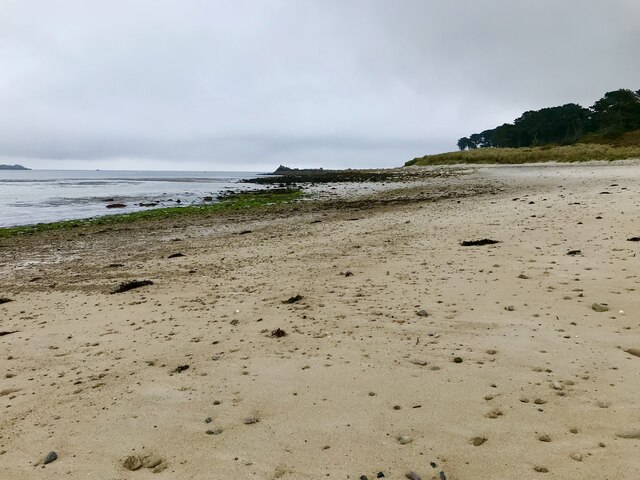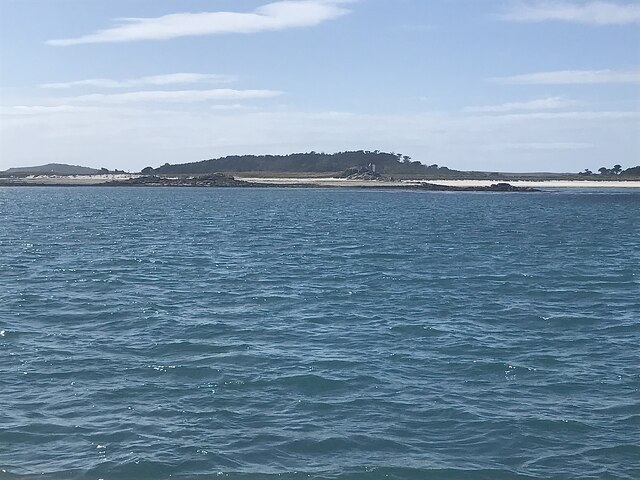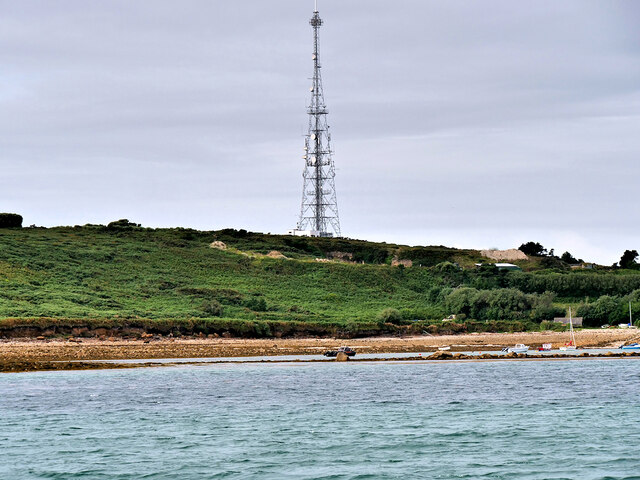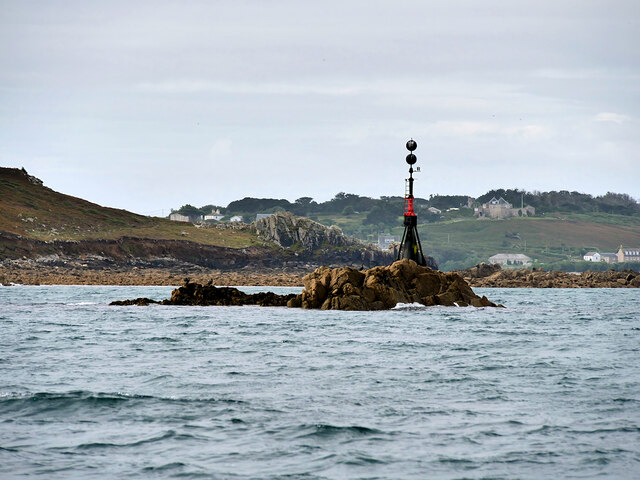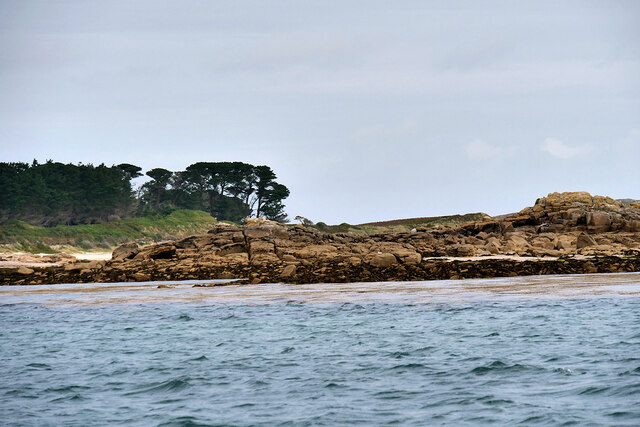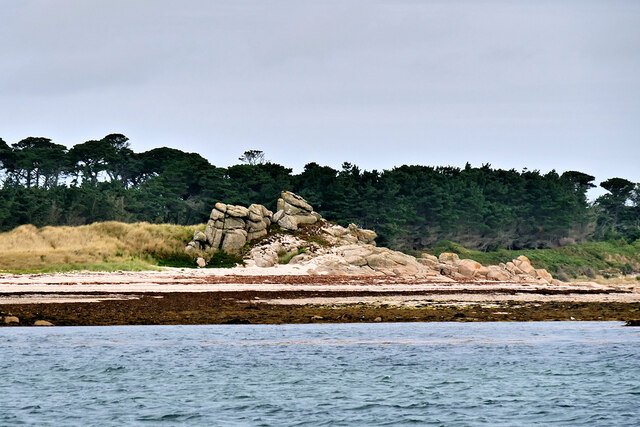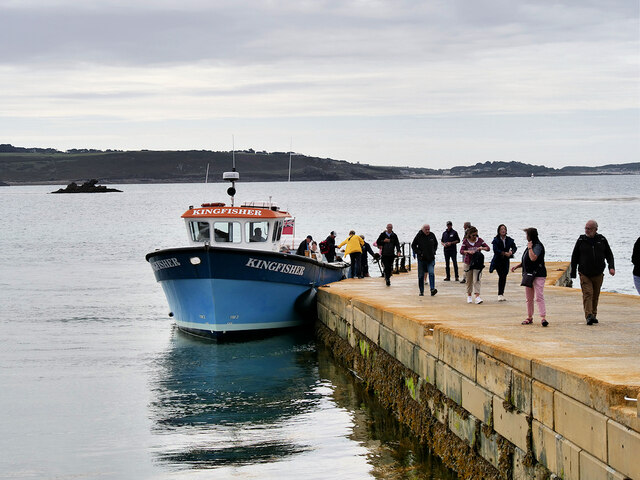Pentle Bay
Bay in Cornwall
England
Pentle Bay

Pentle Bay is a picturesque bay located on the island of Tresco in the Isles of Scilly, Cornwall, England. This bay is renowned for its stunning natural beauty, pristine white sandy beaches, and clear turquoise waters. It is often considered one of the most beautiful and unspoiled beaches in Cornwall.
Surrounded by lush greenery and with breathtaking views of the Atlantic Ocean, Pentle Bay offers visitors a tranquil and idyllic retreat. The beach stretches for approximately one kilometer and is perfect for long walks, sunbathing, and picnicking. Its soft sand is ideal for building sandcastles or simply relaxing under the warm Cornish sun.
The bay is also a popular spot for water activities such as swimming, snorkeling, and paddleboarding due to its calm and crystal-clear waters. It offers a safe and family-friendly environment for children to enjoy the sea.
Pentle Bay is part of the Tresco Abbey Garden, a world-renowned subtropical paradise with an impressive collection of exotic plants and flowers. Visitors can explore the garden's stunning landscapes and unique flora, adding to the overall charm of the bay.
Access to Pentle Bay is possible via a short walk from the island's main settlement, New Grimsby. It is recommended to check the tide times before visiting as the beach is submerged during high tide. Visitors can also enjoy the nearby amenities such as cafes, restaurants, and shops in New Grimsby.
Overall, Pentle Bay offers a serene and picturesque coastal experience, making it a must-visit destination for nature lovers and beach enthusiasts in Cornwall.
If you have any feedback on the listing, please let us know in the comments section below.
Pentle Bay Images
Images are sourced within 2km of 49.947254/-6.3189686 or Grid Reference SV9014. Thanks to Geograph Open Source API. All images are credited.







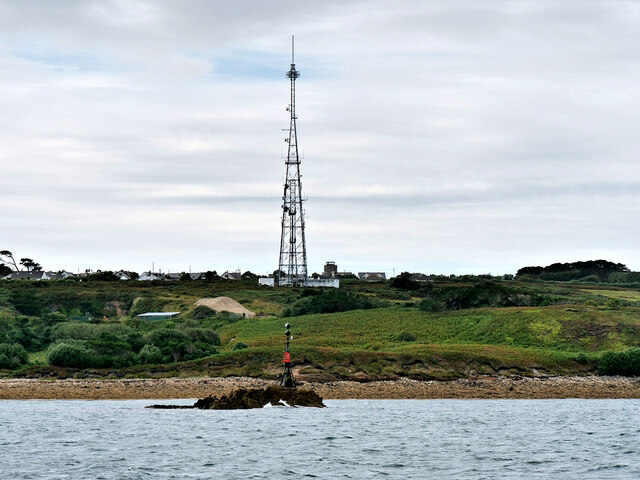
Pentle Bay is located at Grid Ref: SV9014 (Lat: 49.947254, Lng: -6.3189686)
Division: Isles of Scilly
Unitary Authority: Isles of Scilly
Police Authority: Devon and Cornwall
What 3 Words
///host.unrated.cure. Near Tresco, Isles of Scilly
Nearby Locations
Related Wikis
Tresco Priory
Tresco Priory is a former monastic settlement on Tresco, Isles of Scilly founded in 946 AD. It was re-founded as the Priory of St Nicholas by monks from...
Tresco Heliport
Tresco Heliport (ICAO: EGHT) is a heliport located on the island of Tresco, in the Isles of Scilly off the southwest coast of the United Kingdom. The heliport...
Tresco Abbey Gardens
Tresco Abbey Gardens are located on the island of Tresco in the Isles of Scilly, United Kingdom. The 17 acre gardens were established by the nineteenth...
Oliver's Battery, Tresco
Oliver's Battery is a ruined artillery battery on the island of Tresco in the Isles of Scilly off of Cornwall, England. It was built by the Parliamentarian...
Nearby Amenities
Located within 500m of 49.947254,-6.3189686Have you been to Pentle Bay?
Leave your review of Pentle Bay below (or comments, questions and feedback).


